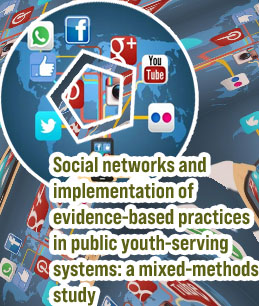Social networks
Benefits of internet and social media
With all of these benefits and risks, how is social media affecting cognitive development? “What we have found at the Children's Digital Media Center is that a lot of digital communication use and, in particular, social media use seems to be connected to offline developmental concerns,” says Subrahmanyam. “If you look at the adolescent developmental literature, the core issues facing youth are sexuality, identity, and intimacy,” says Subrahmanyam. The social media Content marketing works in symbiosis with other types of digital marketing: It is a way to incorporate SEO search terms into fresh website content, and the content created can be shared as social media posts and in email marketing publications. Looking at the analytics for your content marketing can tell you a lot about your customers: what are they looking for when they land on your site? What kinds of content make them stay on the site longer and keep looking around? What kinds make them lose interest and navigate away?
Media marketing courses online
Cooperation is central to the success of human societies and it is widespread, but social and biological scientists have long pondered how it can persist in the face of possible exploitation. One answer involves networked interactions and population structure. People often have control over whom they interact with, and interaction patterns change over time. This creates a new form of conditional action: people can change their network structure, not just their own cooperation behavior. The Print Edition Enterprise social networks are not the same as external-facing social networks like Facebook, Twitter, or LinkedIn, although they may be built to look and function similarly. The main difference between these platforms and an enterprise social network is that an ESN can only be accessed by the employees of a particular organization. ESNs are built with the business world in mind, which means they have a focus on seamless, secure communication and tools that enhance collaboration.
Why You Need Digital Marketing Today
The risks might be related to how much social media teens use. A 2019 study of more than 6,500 12- to 15-year-olds in the U.S. found that those who spent more than three hours a day using social media might be at heightened risk for mental health problems. Another 2019 study of more than 12,000 13- to 16-year-olds in England found that using social media more than three times a day predicted poor mental health and well-being in teens. Social Media Today news delivered to your inbox Smaller shares – though still a majority – of Snapchat or Instagram users report visiting these respective platforms daily (59% for both). And being active on these sites is especially common for younger users. For instance, 71% of Snapchat users ages 18 to 29 say they use the app daily, including six-in-ten who say they do this multiple times a day. The pattern is similar for Instagram: 73% of 18- to 29-year-old Instagram users say they visit the site every day, with roughly half (53%) reporting they do so several times per day.
